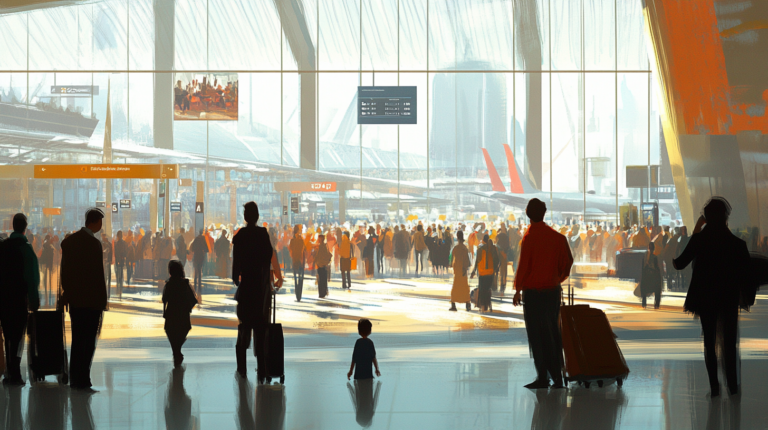Flight Cancellation and Delay News: Navigating Recent Disruptions in Air Travel
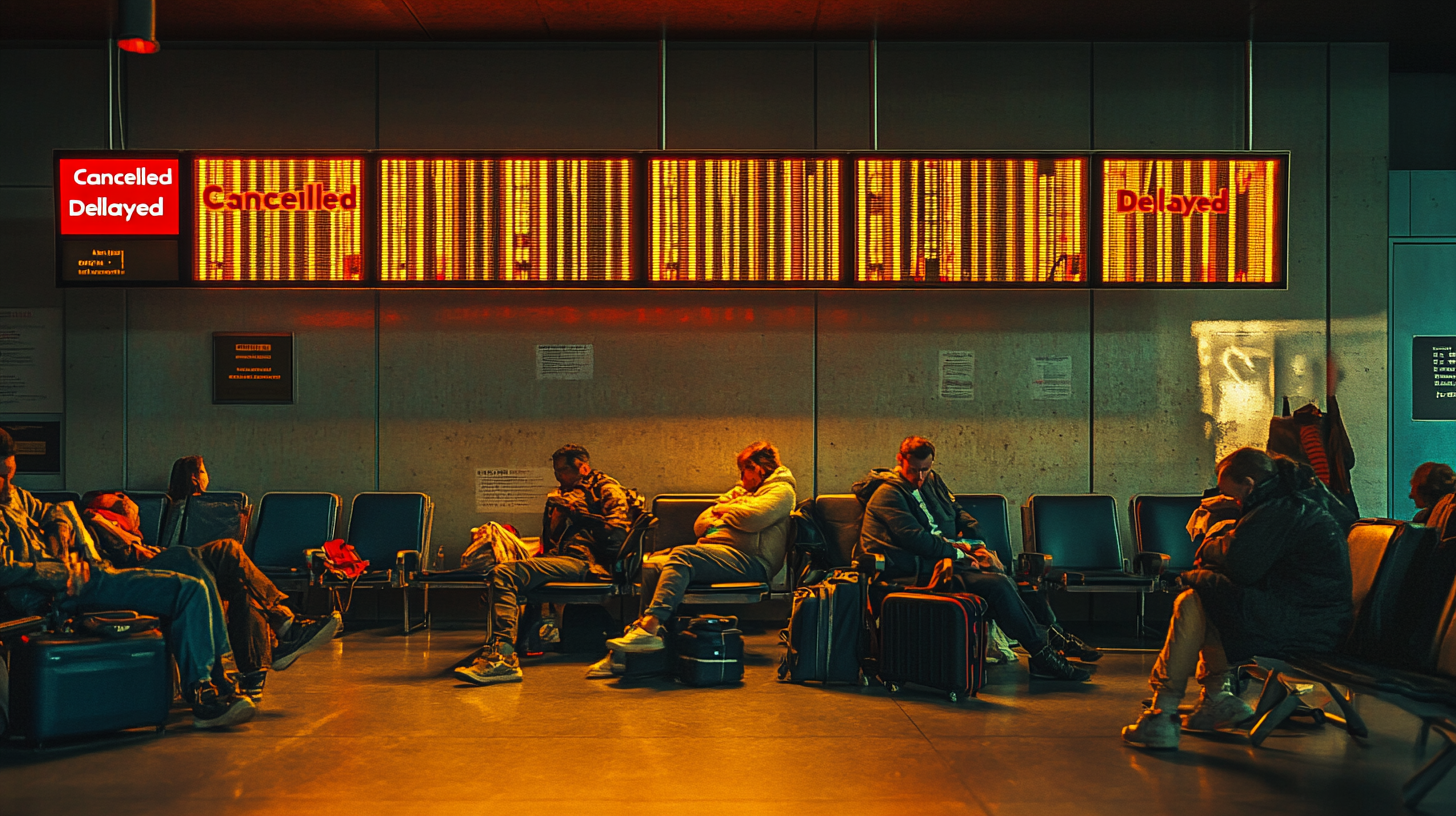
The aviation industry has recently navigated through a period of unprecedented turbulence, with a convergence of technological failures, severe weather events, and regulatory transformations impacting flights across the United States and around the globe. These challenges have not only disrupted travel plans but have also exposed systemic vulnerabilities in aviation operations. Passengers worldwide have faced widespread delays and cancellations, sparking intense discussions on infrastructure resilience, the effectiveness of contingency planning, and understanding passenger rights during flight disruptions .
Technological Outages Cause Widespread Disruptions

NOTAM System Outage and Restoration
On a recent Saturday, the Notice to Air Missions (NOTAM) system—a critical aviation communication network that provides pilots with essential real-time flight information—experienced a significant outage. This system is indispensable for flight safety, alerting pilots to potential hazards such as runway closures, airspace restrictions, and navigational warnings. Transportation Secretary Sean Duffy announced that while a backup system was activated promptly to minimize disruption, the primary system was not fully restored until Sunday. This outage resulted in 1,313 flight delays and 80 cancellations across the U.S., leaving thousands of passengers stranded and prompting concerns over the reliability of aviation communication systems .
Duffy emphasized the urgency of upgrading the NOTAM system to prevent future issues, noting that a similar outage had occurred in January 2023. During that incident, air traffic nationwide was severely disrupted, highlighting vulnerabilities in the aviation sector’s technological infrastructure. The recurrent problems underscore the need for robust and reliable systems to ensure safety and efficiency in air travel. Aviation experts are calling for increased investment in technology and infrastructure to mitigate such risks and enhance the overall resilience of air transportation networks.
Microsoft Windows Update Triggers Global Software Outage
A flawed Microsoft Windows update led to a global software outage, disrupting multiple sectors and wreaking havoc on airline operations worldwide. Over three consecutive days, more than 1,500 U.S. flights were canceled each day, causing massive logistical challenges. Delta Air Lines was heavily affected, canceling over 1,000 flights due to an external vendor’s technical issue linked to the update. The outage not only impacted flight schedules but also strained airline customer service teams as they worked to accommodate displaced passengers.
Other major carriers like United Airlines and American Airlines also grappled with service restoration challenges, illustrating the widespread nature of the disruption. Passengers faced extended delays, with many left stranded at airports without clear information on when services would resume. Airlines responded by offering travel vouchers and credit options to affected customers, though these measures did little to alleviate immediate frustrations. The U.S. Department of Transportation (DOT) labeled these disruptions as “controllable” and reiterated passengers’ entitlement to refunds for canceled flights, emphasizing the importance of consumer rights in airline industry regulations .
Global Impact of IT Outages on Air Travel
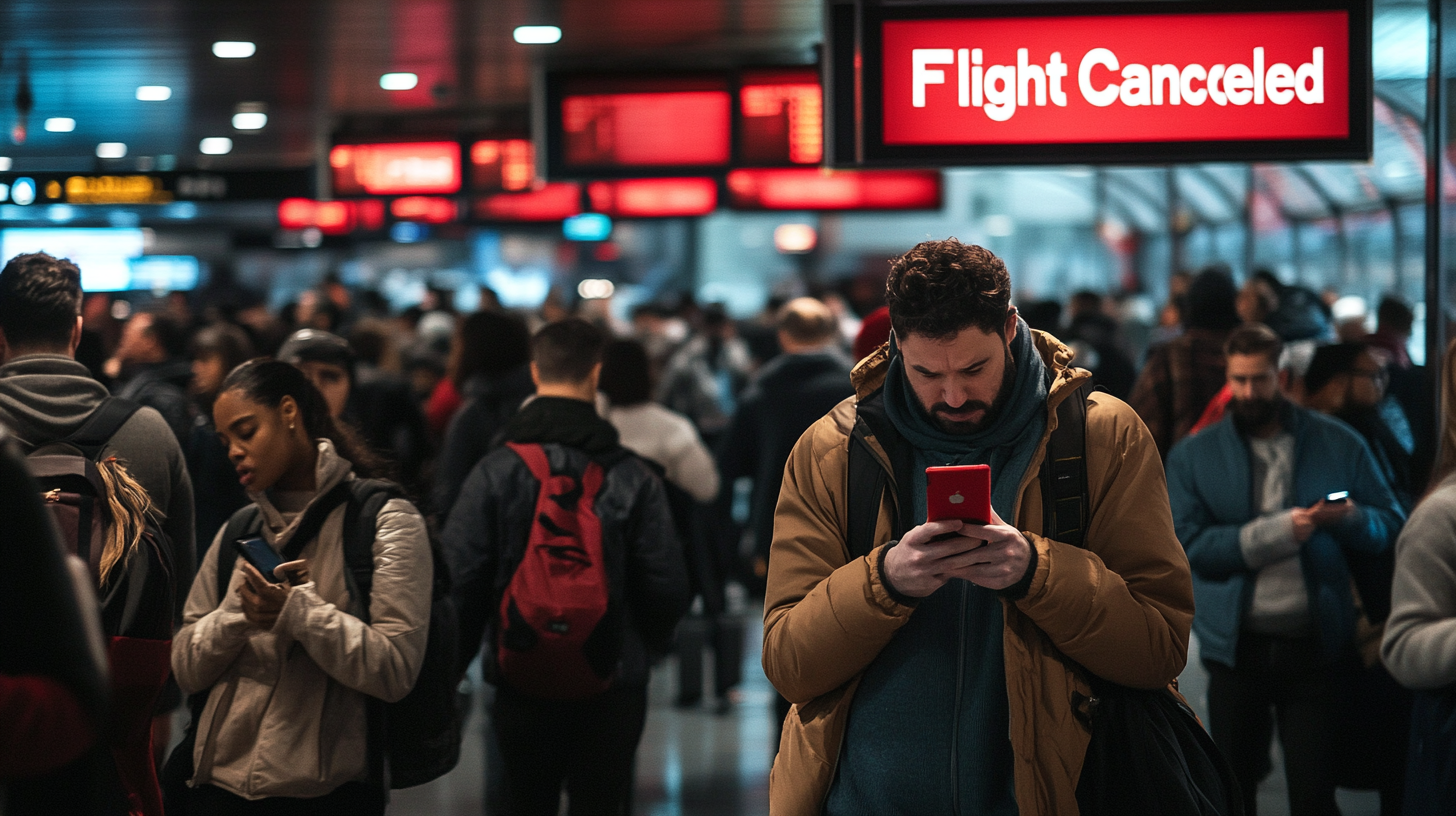
A massive IT outage caused by issues with Microsoft’s cloud services created chaos at airports worldwide early on a Friday. In the United States alone, over 7,300 flights were delayed, and more than 2,400 were canceled. Major airlines, including Delta Air Lines and United Airlines, temporarily paused their operations due to the outage, demonstrating the critical dependency of modern aviation on reliable IT infrastructure.
The technical glitch affected companies on a global scale, leading to malfunctioning flight information monitors and significant frustration among passengers. Airports such as John F. Kennedy International Airport in New York and Hartsfield-Jackson Atlanta International Airport experienced long delays and operational challenges. The scenes of crowded terminals and long lines became emblematic of the day’s turmoil. International airports and public services around the world also felt the impact, highlighting the interconnectedness of global aviation technology and the ripple effects of system failures in one region on worldwide operations.
FAA’s NOTAM System Issues and Flight Delays
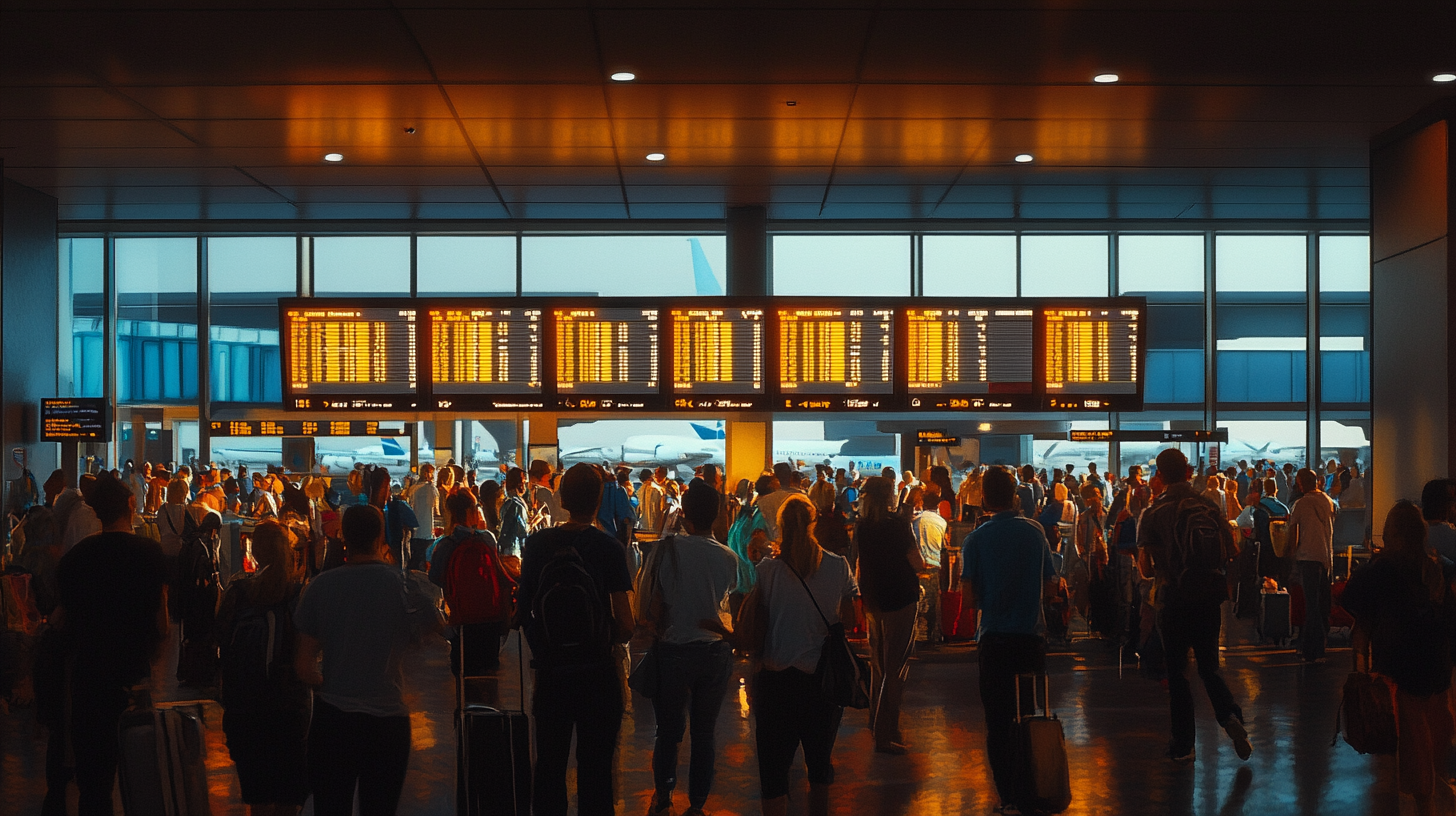
Another outage in the Federal Aviation Administration’s (FAA) NOTAM system on a Sunday threatened to cause widespread flight delays across the U.S. Although a backup system was implemented to prevent disruptions to the National Airspace System, the incident still led to nearly 500 delayed flights and over 60 cancellations. The repeated issues with the NOTAM system have raised concerns about the aging technology infrastructure within the FAA and the need for modernization to support the demands of contemporary air travel.
This outage occurred in the wake of two deadly aviation accidents: a mid-air collision at Ronald Reagan Washington National Airport and a medevac helicopter crash in Philadelphia. These incidents intensified scrutiny on aviation safety protocols and the critical role of timely hazard notifications. The FAA worked diligently to restore the NOTAM system, cautioning travelers about potential residual delays. The series of events underscored the importance of dependable communication systems and the potential consequences when they fail. Discussions have intensified around enhancing aviation safety measures through technology .
Regulatory Responses and Passenger Rights

In response to the increasing flight disruptions, Transportation Secretary Pete Buttigieg announced new DOT regulations aimed at enhancing passenger rights. The rules mandate that airlines must issue cash refunds for canceled or significantly delayed flights. Specifically, delays over three hours for domestic flights and over six hours for international flights now qualify passengers for refunds. This regulatory shift represents a significant step toward holding airlines accountable for service disruptions and ensuring fair treatment of consumers.
The regulations also require airlines to reimburse passengers for lost or delayed baggage and any extra services paid for but not received, emphasizing prompt cash reimbursement. Airlines are expected to comply with these new rules within six months. These measures aim to uphold higher service standards following past incidents, such as the fine imposed on Southwest Airlines for failing to provide timely refunds. The DOT’s actions reflect a broader commitment to strengthening consumer protections in air travel , ensuring that passengers are not left bearing the financial burdens of operational failures beyond their control.
Severe Weather Adds to Flight Cancellations
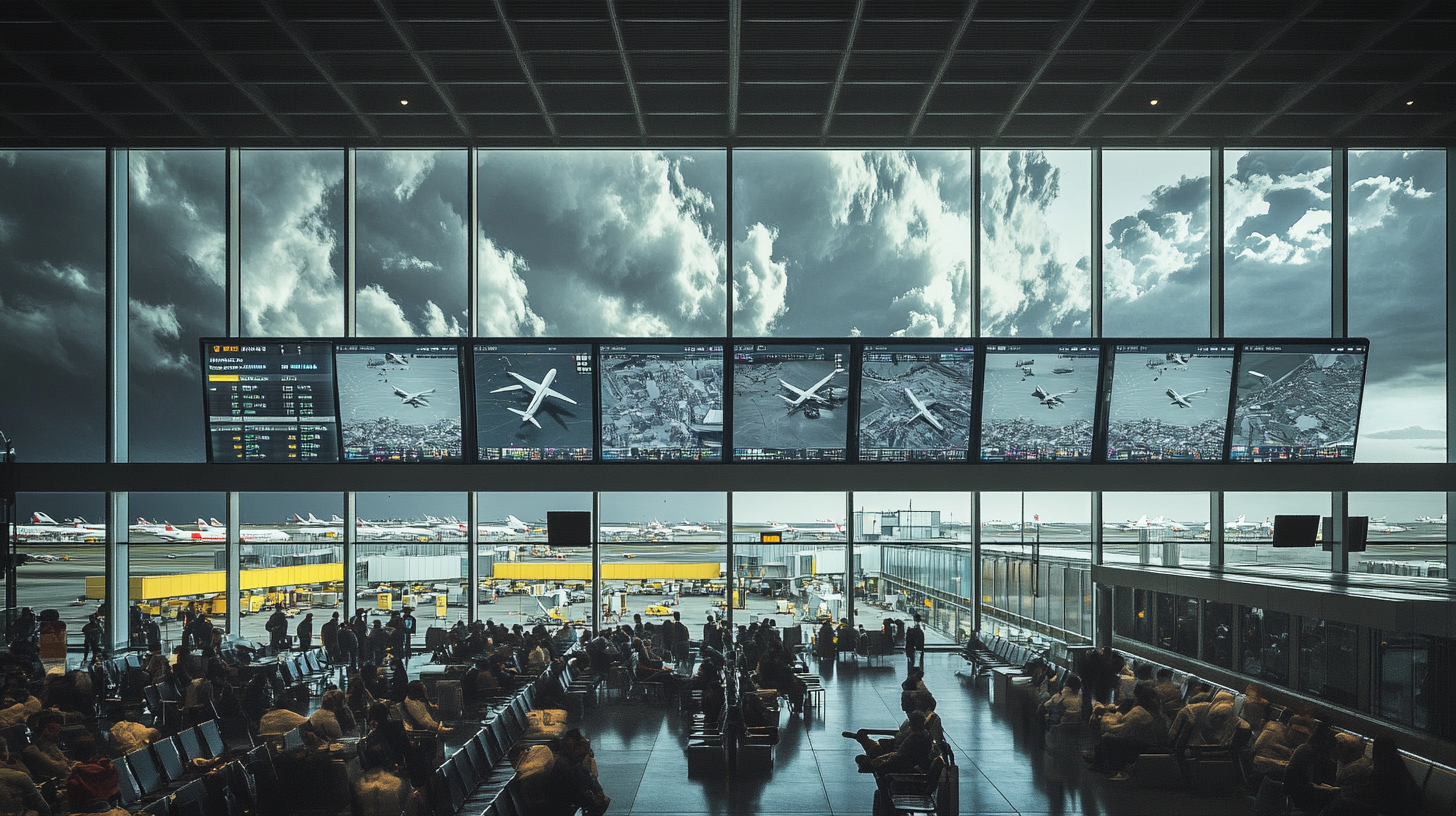
Severe winter weather compounded the operational challenges faced by airlines. On a recent Tuesday, more than 1,800 U.S. flights were canceled, and over 4,700 were delayed due to adverse weather conditions sweeping across key transit hubs. Blizzards, icy runways, and reduced visibility created hazardous conditions, forcing airlines to ground flights for safety reasons. Southwest Airlines experienced the highest number of cancellations, followed closely by United Airlines, as they grappled with rerouting aircraft and accommodating passengers.
Regional carriers such as SkyWest Airlines, Republic Airways, and American Airlines each canceled over 100 flights. Major airports, including LaGuardia Airport in New York and Chicago O’Hare International Airport, were heavily impacted by the weather disruptions. Travelers faced long lines, scarce rebooking options, and limited accommodations. Alaska Airlines also saw significant cancellations amid an ongoing Boeing investigation, adding to the operational strains. On that day, only 36% of U.S. flights departed on time, reflecting the extensive impact of the severe weather on air travel and highlighting the need for improving airline resilience to weather-related disruptions .
Looking Ahead: Enhancing Resilience in Air Travel

The recent series of flight cancellations and delays highlight the vulnerabilities within the aviation industry’s technological infrastructure and operational systems. The repeated outages of critical systems like NOTAM and the impact of external software issues emphasize the need for significant upgrades and robust contingency planning. Airlines and regulatory bodies are now faced with the challenge of investing in advanced technologies and protocols that can withstand unforeseen events.
Furthermore, the new DOT regulations signify a push towards greater accountability from airlines and enhanced protection for passengers. By enforcing stricter refund policies and compensations, the DOT aims to ensure that airlines are more responsive to disruptions, whether due to technological failures or weather-related events. This shift encourages carriers to prioritize customer service and develop more effective communication strategies during crises.
For passengers, staying informed about their rights and the evolving policies is crucial. Utilizing resources such as guides on navigating flight cancellations and delays can empower travelers to make informed decisions and seek appropriate recourse when faced with disruptions. As the industry works towards improving its systems and responses to unforeseen events, travelers can expect a gradual enhancement in service reliability and support during disruptions.
Final Thoughts

The recent disruptions in air travel serve as a stark reminder of the complexities and interdependencies within the aviation sector. Addressing these challenges requires coordinated efforts between governmental agencies, airlines, and technology providers. Collaborative initiatives focused on modernizing aviation infrastructure and enhancing regulatory frameworks are essential.
Follow us back to Seat 5A for more insights and updates on the evolving landscape of air travel. With the implementation of new regulations and a focus on upgrading critical systems, there is hope for a more resilient and passenger-centric air travel experience in the future. Ensuring that lessons are learned from these events will be key to building a stronger, more reliable aviation industry.


